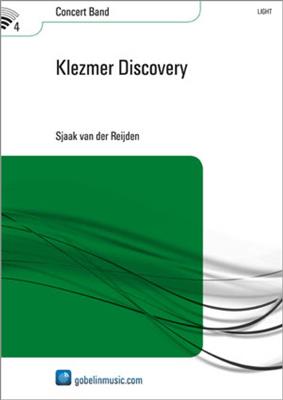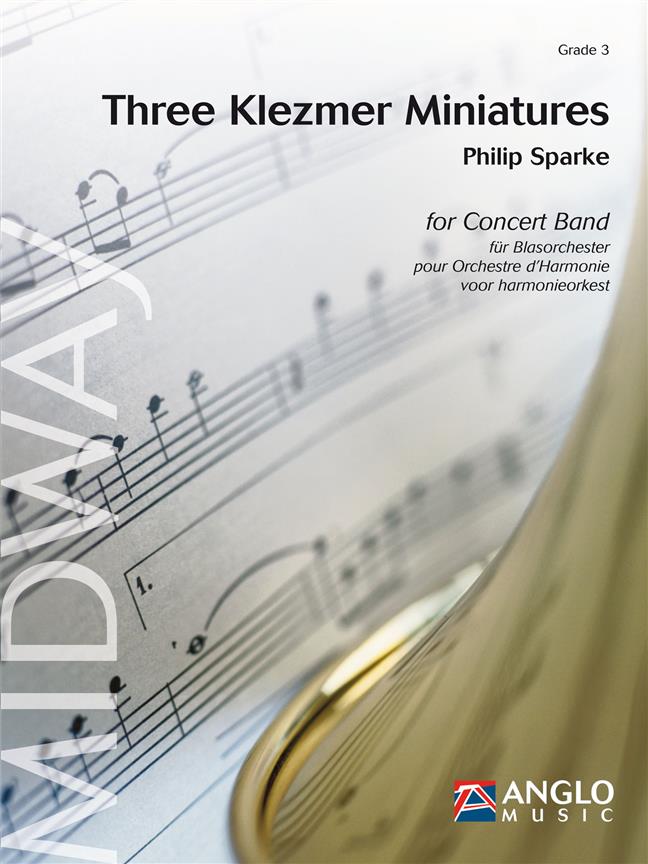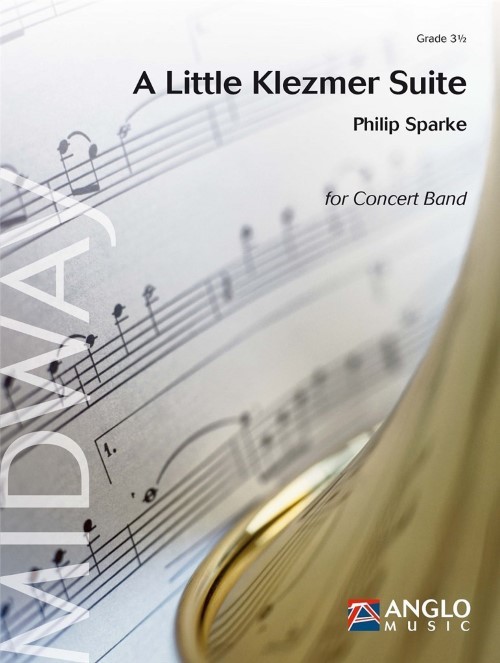Results
-
 £131.10
£131.10 -
£76.00
Jewish Folk Festival
Estimated dispatch 7-14 working days
-
£134.99
Jewish Folksong Suite - Roland Kernen
Estimated dispatch 7-14 working days
-
 £134.99
£134.99Jewish Folksong Suite (Concert Band - Score and Parts) - Kernen, Roland
Duration: 8.00
Estimated dispatch 7-14 working days
-
 £174.99
£174.99Klezmer Discovery - Sjaak van der Reijden
The Yiddish word 'Klezmer' has been derived from the Old Hebrew words 'Kley' (tool, instrument) and 'Zemer' (song, singing, making music).Klezmer is the traditional music of Jews from Eastern Europe.Yiddish musicians (Klezmorim) were regularly invited to come and play at Yiddish weddings as well as several other Jewish celebrations and festive occasions. Despite its close connection with traditional Eastern European folk music, Klezmer music has succeeded in preserving its distinctive Jewish character. 'Klezmer Discovery' is a voyage of discovery through the richly varied music of the Jewish people from Eastern Europe.The introduction consists of anumber of motives from different traditional melodies (a Mitzve Tenzel and L'cha Dodi), followed by a melody in 3/8th time (Kandel's Hora). This dance melody originally came from Bessarabia (present-day Moldavia) and was taken along to America by Jewish musicians round 1900. Subsequently, 'Der Terk in Amerika', a composition by famous clarinet player Naftule Brandwein can be heard. A number of fast, cheerful dance melodies (bulgars) form the finale of 'Klezmer Discovery' (Lebedyk un Freylekh, Lomir sich iberbetn and Sherele).
Estimated dispatch 7-14 working days
-
 £141.99
£141.99Three Klezmer Miniatures (Concert Band - Score and Parts) - Sparke, Philip
Three Klezmer Miniatures is Philip Sparke's third work based on traditional Jewish klezmer melodies, after Shalom and A Klezmer Karnival. Klezmer music originated in the shtetl (villages) and ghettos of Eastern Europe, where itinerant Jewish troubadours, known as klezmorim, had performed at celebrations, particularily weddings, since the early Middle Ages. Three Klezmer Miniatures uses the following traditional tunes:Sham Harei Golan (There are the mountains of Golan) and Nigun Shel Yossi, a circle dance.Tumbalalaika, a Russian Jewish love song.Hava Nagila, the most famous of all Jewish folk dances; the title means "let us rejoice."Duration: 7:00
Estimated dispatch 7-14 working days
-
£174.99
Klezmer Discovery Wind Band Set (Score & Parts)
The Yiddish word 'Klezmer' has been derived from the Old Hebrew words 'Kley' (tool, instrument) and 'Zemer' (song, singing, making music).Klezmer is the traditional music of Jews from Eastern Europe.Yiddish musicians (Klezmorim) were regularly invited to come and play at Yiddish weddings as well as several other Jewish celebrations and festive occasions. Despite its close connection with traditional Eastern European folk music, Klezmer music has succeeded in preserving its distinctive Jewish character. 'Klezmer Discovery' is a voyage of discovery through the richly varied music of the Jewish people from Eastern Europe.The introduction consists of a number of motives from different traditional melodies (a Mitzve Tenzel and L'cha Dodi), followed by a melody in 3/8th time (Kandel's Hora). This dance melody originally came from Bessarabia (present-day Moldavia) and was taken along to America by Jewish musicians round 1900. Subsequently, 'Der Terk in Amerika', a composition by famous clarinet player Naftule Brandwein can be heard. A number of fast, cheerful dance melodies (bulgars) form the finale of 'Klezmer Discovery' (Lebedyk un Freylekh, Lomir sich iberbetn and Sherele). 12:00
Estimated dispatch 7-14 working days
-
 £137.99
£137.99A Little Klezmer Suite - Philip Sparke
A Little Klezmer Suite was commissioned by Rushton Park High School to celebrate the 50th anniversary of their band programme. They gave the premiere in a virtual online concert in October 2020. Klezmer music originated in the 'shtetl' (villages) and the ghettos of Eastern Europe, where itinerant Jewish troubadours, known as 'klezmorim', had performed at celebrations, particularly weddings, since the early Middle Ages. 'Klezmer' is a Yiddish term combining the Hebrew words 'kley' (instrument) and 'zemer' (song). The roots of the style are found in secular melodies, popular dances, Jewish 'hazanut' (cantorial music) and also the 'nigunim', the wordless melodies intoned by the 'Hasidim' (orthodox Jews). The melodies used in the four movements of A Little Klezmer Suite have traditionally been used in Jewish wedding ceremonies and celebrations.
Estimated dispatch 7-14 working days
-
 £141.99
£141.99Three Klezmer Miniatures - Philip Sparke
Klezmer music originated in the shtetl (villages) and ghettos of Eastern Europe, where itinerant Jewish troubadours, known as klezmorim, had performed at celebrations since the early Middle Ages. Three Klezmer Miniatures uses thefollowing traditional tunes: 1. Sham Harei Golan (There are the mountains of Golan) and Nigun Shel Yossi, a circle dance. 2. Tumbalalaika, a Russian Jewish love song. 3. Hava Nagila, the most famous of all Jewish folk dances - thetitle means let us rejoice. Dur: 7:00 (Grade 4)
Estimated dispatch 7-14 working days
-
 £137.99
£137.99A Little Klezmer Suite (Concert Band - Score and Parts) - Sparke, Philip
A Little Klezmer Suite was commissioned by Rushton Park High School to celebrate the 50th anniversary of their band programme. They gave the premiere in a virtual online concert in October 2020. Klezmer music originated in the shtetl (villages) and the ghettos of Eastern Europe, where itinerant Jewish troubadours, known as klezmorim, had performed at celebrations, particularly weddings, since the early Middle Ages. Klezmer is a Yiddish term combining the Hebrew words kley (instrument) and zemer (song). The roots of the style are found in secular melodies, popular dances, Jewish hazanut (cantorial music) and also the nigunim, the wordless melodies intoned by the Hasidim (orthodox Jews). The melodies used in the four movements of A Little Klezmer Suite have traditionally been used in Jewish wedding ceremonies and celebrations. Duration: 7.45
Estimated dispatch 7-14 working days
